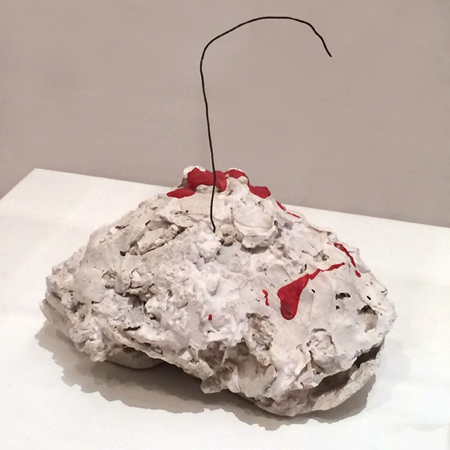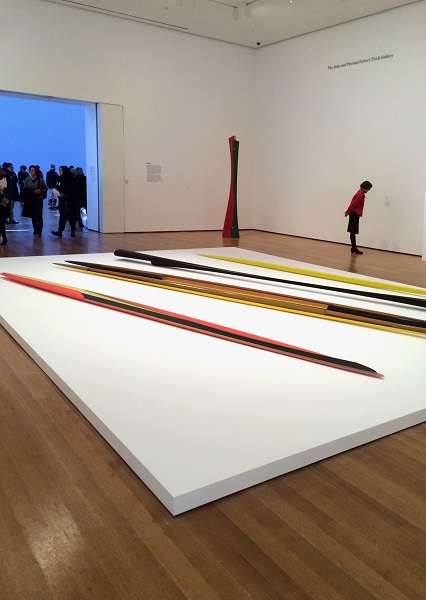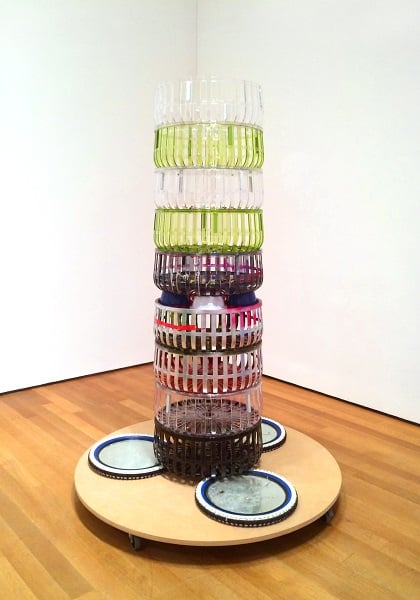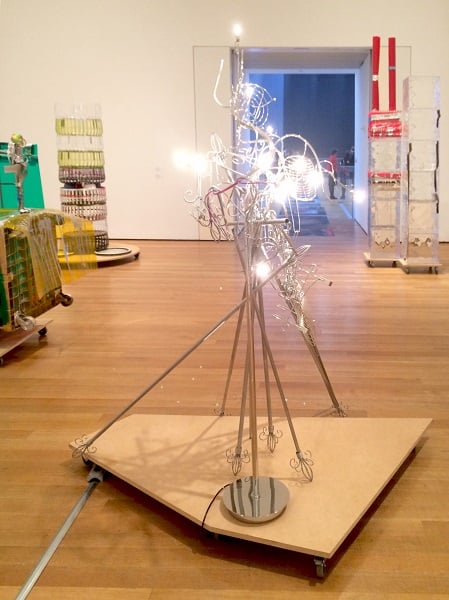Art & Exhibitions
Isa Genzken at The Museum of Modern Art
The first major United States retrospective of German artist Isa Genzken.

The first major United States retrospective of German artist Isa Genzken.

John McCord

While a mainstay of the international art circuit, Isa Genzken (German, b.1948) has remained largely absent from institutions on this side of the Atlantic. In staging a major survey of her work from the past 40 years, The Museum of Modern Art brings Genzken’s inventive body of work to the forefront of New York’s male-dominated art world. Beginning with highly formal, post-Minimalist explorations produced while Genzken was a student at the renowned Kunstakademie in Dusseldorf, and ending with a series of Tatlin-esque proposals for the World Trade Center site, MoMA’s chronological presentation documents the constant evolution of her ground-breaking work in sculpture, painting, photography, film, and installation.

Isa Genzken, installation view, Isa Genzken: Retrospective, The Museum of Modern Art, New York, NY
The motif of architecture, and specifically it’s relation to the body, is a constant presence in Genzken’s work. Her early lacquer and wood sculptures from the 1970s and 1980s have the contour and polish of a Boeing 757, yet also carry an elegant corporeal silhouette. Genzken’s examination and manipulation of scale and how it relates to architecture is another constant, seen best in a large, close-up photograph of a women’s ear. In Ohr (Ear), 1980, what is typically only a few inches is enlarged to over six feet, and the intricate, spiraled entrance to the ear canal becomes a cavernous window into the body. Similarly, Genzken’s Weltempfänger (World Receiver Radio) works feature solid concrete blocks with antennas that extend outward, emphasizing the ability of the dense, abstract mass to receive, as well as its potential to create. Larger concrete works made in the mid-to-late 1980s have a more direct reference to architecture, with the ambiguous scale of crumbling forms simultaneously recalling both small, intimate spaces and vast ruins.

Isa Genzken, Car Park (Ground Zero), 2008, spray paint and synthetic polymer paint on plastic tables, plastic bowls, toy cars, bicycle tires, fiberboard, and casters
While this is the first major presentation of Genzken’s work in the United States, American architecture, culture, and power became increasingly central to her work in the 1990s, and her interrogation of Modernist architecture started to center on the urban landscapes of New York City. Her vast archive of collaged photographs, I love New York, Crazy City (1995–1996), her sculptural series Empire Vampire, and her recent large-scale installation of Ground Zero proposals, are all uniquely American. Installed in one of the last rooms of the exhibition is one of her most memorable projects: the Ground Zero series, a large group of individual sculptures made in the aftermath of September 11, 2001. The series depicts a towering car park, discotheque, church, hospital, shops, and a memorial, which combine to form a chaotic and jarring environment in which the powers of architecture and its inextricable link to the body become overwhelmingly apparent.
At the entrance to the sixth floor galleries, an array of mannequins are scattered across the floor, imaginatively clothed, embellished, and accompanied by numerous objects: animals, sculptures, rugs, scooters, and luggage, to name a few. This group, Schauspieler (Actors), become almost the inverse of the Ground Zero grouping, with Genzken casting the human form as the central structure to the sculptures. Similarly, a large installation in the MoMA’s lobby, Oil (2007), emphasizes the human form by omitting it almost entirely. In the Oil series, which was originally exhibited in Genzken’s installation at the German Pavilion in the 2007 Venice Biennale, suitcases of all shapes and sizes are strewn across the concrete floor. Accompanied here and there by a bird, a puppy, clothing, and other personal objects, the suitcases evoke an image of individuals on an endless journey with no destination.

Isa Genzken, installation view, Isa Genzken: Retrospective, The Museum of Modern Art, New York, NY
This overdue retrospective at The Museum of Modern Art positions Genzken as a progenitor of sorts. Defying categorization throughout her career, Genzken’s oeuvre is enormously important to many artists, with a number of today’s younger stars finding her work particularly influential. While Genzken’s market is highly active—her record price at auction is US$426,000—and supported by powerful dealers (Daniel Bucholz has long represented her, and more recently, David Zwirner, Hauser and Wirth, and Neugerriemschneider), the MoMA show serves as a reminder that Genzken is still essentially an undervalued artist, with an influential career that is rapidly on the rise.
Isa Genzken: Retrospective
November 23, 2013–March 10, 2014
The Museum of Modern Art
11 West 53rd Street
New York, NY 10019